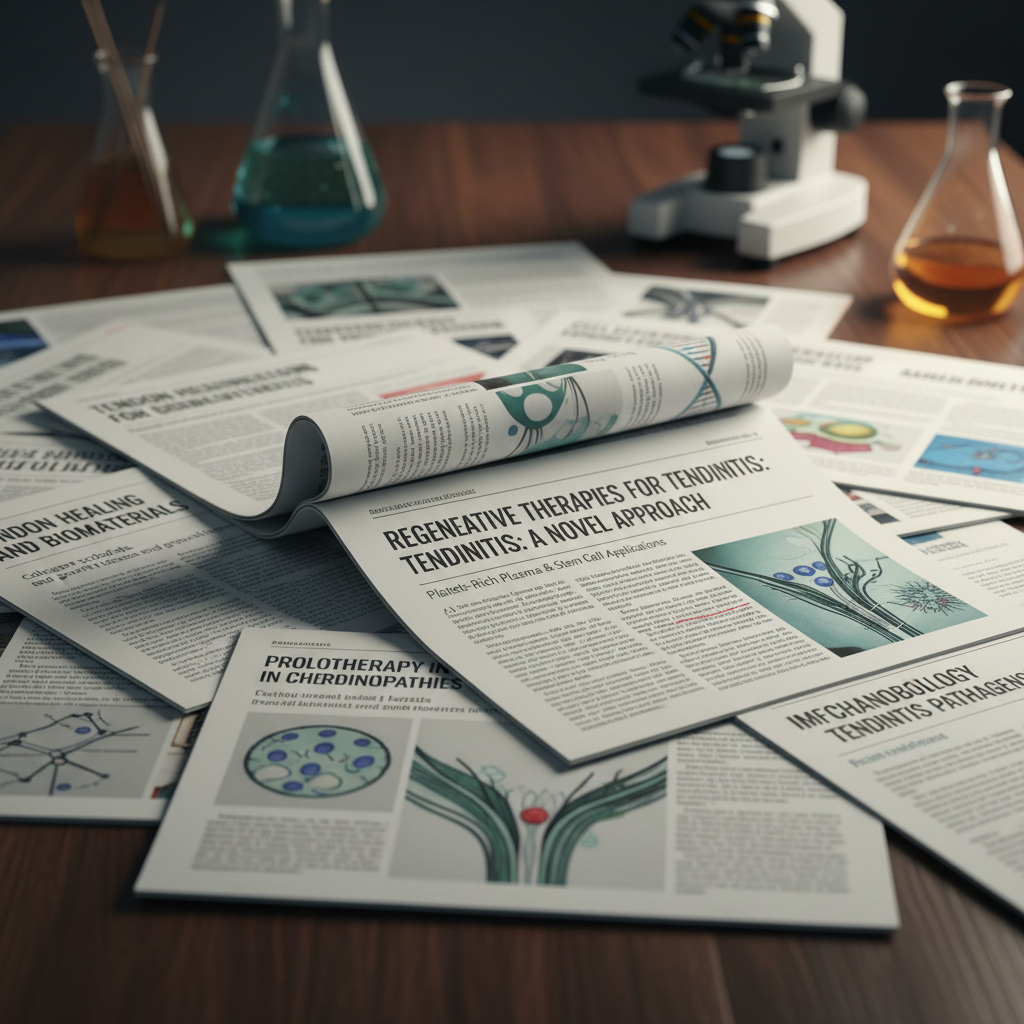October 14, 2025

Tendonitis of the foot and ankle is one of the most common musculoskeletal problems, affecting athletes, workers on their feet all day, and even those with age-related wear and tear. It occurs when the thick, fibrous tendons that connect muscles to bones become irritated, inflamed, or micro-torn. Left untreated, tendonitis can evolve into chronic pain, instability, or even full ruptures that require surgery.
For decades, patients with tendonitis had few options beyond rest, physical therapy, anti-inflammatory drugs, or steroid injections. While these approaches offered some relief, they rarely addressed the root cause of tendon degeneration. Today, thanks to breakthroughs in regenerative medicine, patients finally have access to therapies that do more than mask symptoms—they can repair and restore damaged tissue.
This article explores how treatment has evolved, tracing the history of regenerative medicine, the milestones that shaped its development, and the advanced therapies now transforming foot and ankle care.
Historically, tendonitis treatment focused on managing pain and reducing inflammation. Standard care included:
These approaches helped manage symptoms but did not encourage actual healing. This limitation pushed researchers to explore whether the body’s own biology could be harnessed for repair.
The roots of regenerative medicine stretch back nearly a century:
These breakthroughs laid the foundation for regenerative orthopedics and opened the door to new possibilities for tendon healing.
As regenerative medicine matured, treatments for tendonitis became more advanced and effective.
One of the earliest regenerative treatments, prolotherapy involves injecting a dextrose solution into injured tissue to trigger a controlled healing response. For foot and ankle tendonitis, prolotherapy has been shown to strengthen ligaments and tendons by stimulating new collagen formation.
PRP therapy became widely used in sports medicine after high-profile athletes reported faster recoveries with it. By concentrating platelets—which contain growth factors that promote repair—PRP injections help accelerate healing in Achilles tendonitis, posterior tibial tendonitis, and peroneal tendon issues.
Mesenchymal stem cells (MSCs), harvested from bone marrow or adipose tissue, proved to be powerful tools for regeneration. These cells not only help form new tissue but also release signaling molecules that reduce inflammation and recruit the body’s own repair mechanisms.
Wharton’s Jelly, derived from umbilical cord tissue, contains a rich mix of hyaluronic acid, growth factors, and regenerative proteins. Its use in tendonitis represents the evolution toward off-the-shelf biologics that can deliver healing components without the need for invasive harvesting procedures.
Exosomes are tiny vesicles released by stem cells that carry genetic information and proteins to other cells, essentially acting as messengers. By improving cell-to-cell communication, exosome therapy enhances the effectiveness of PRP and stem cells, creating an even more powerful regenerative environment.
Compared to traditional treatments, regenerative medicine offers a number of advantages:
These benefits explain why regenerative medicine has rapidly grown into a frontline option for athletes and active individuals alike.
Today, regenerative medicine is moving into mainstream orthopedic care. Many clinics now combine different therapies—such as PRP with exosomes or stem cells with Wharton’s Jelly—for synergistic results. Advanced imaging techniques, like ultrasound guidance, ensure injections are delivered with pinpoint accuracy.
Patients with foot and ankle tendonitis can now expect treatment plans that are:
Looking ahead, researchers are exploring:
What began as an alternative option is quickly becoming a standard of care for musculoskeletal injuries.
Tendonitis of the foot and ankle doesn’t have to hold you back. Thanks to the evolution of regenerative medicine, treatments today go far beyond rest and steroids—they tap into the body’s own healing power to restore strength, reduce pain, and help you return to the activities you love.